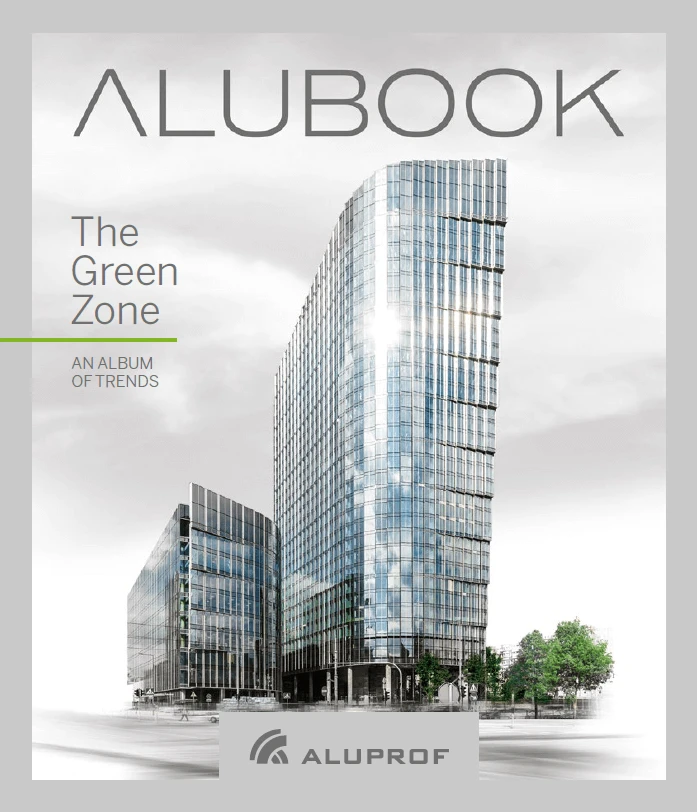
2020-08-06
ALUPROF publishes a new AluBOOK album of trends, The Green Zone Available online now!

ALUPROF has released The Green Zone, the second edition of its AluBOOK guide to trends. Inside the covers, experts, architects, scientists and scholars turn their attention to the concept of green building and, at the same time, explore its most prestigious and groundbreaking examples in Poland. Given the new challenges brought by the first half of 2020, the company is making the latest edition available online.
Trends in architecture
The AluBOOK is an innovatory publication which sets out to promote trends, state-of-the-art projects and important creative figures in the fields of architecture and construction. The main topic of the new edition is ecology in building, both commercial and residential. The distinguished experts featured in the book include Przemo Łukasik of Medusa Group, Zbigniew Maćków of Maćków Pracownia Projektowa, Piotr Jasiński of Cavatina Holding, Dorota Szlachcic of ArC2 Fabryka Projektowa, Marta Weber-Siwirska, EngD, President of the Polish Green Roofs Association, and Alicja Kuczera, Managing Director of the Polish Green Building Council.
As Tomasz Grela, President of the Aluprof SA Management Board, explains:
In an age of rapidly progressing climate change, it’s extraordinarily important for us to take things much further as regards the importance placed on promoting and implementing the principles of sustainable development and ecological building. It affects every stage of a building’s existence, the design, the construction and the use. As a trendsetter and market leader, ALUPROF has been following that route for years in its business and educational activities.
A multilevel approach to green building
With a view to continuing the regional line taken in the first edition of the AluBOOK, the new publication contains a chapter describing the company’s key projects in Lower Silesia, including the Sky Tower office, retail and residential development, the Afrykarium and modern office buildings like Green2Day and Carbon Tower. The Green is the New Black chapter presents trends in green building, which is incorporated at the design stage nowadays as both good and standard practice. Readers have the chance of discovering the secrets of trailblazing buildings like the Posejdon in the north-eastern city of Szczecin, the International Congress Centre in Katowice, in the south, the Alchemia complex in Gdańsk, on the Baltic coast, and Royal Wilanów in Warsaw. The buildings are designed with the environment in mind; pioneering energy-saving solutions are used and they also include features such as urban oases, in other words, green roofs, vertical gardens and space provided for apiaries.
The Green Zone also addresses the subject of ecology in the building of single-family homes, which is equally as important to the health of people and of the environment.
As Tomasz Grela puts it:
When it comes to intelligent and responsible building, we can’t allow ourselves to forget the single-family homes sector. In addition to comfort and aesthetics, the choice of construction materials, which should be recyclable, plays a huge role here, as do the dedicated architectural solutions that make it possible to create energy-saving structures that also have the beauty of fine design. One section of the book presents the history of Green Line, a single-family home in the north-eastern region of Warmia. The design of the house was determined by the green roof, with all its benefits.
Lovers of good architecture and current trends in the construction industry can download The Green Zone AluBOOK from:
Other news